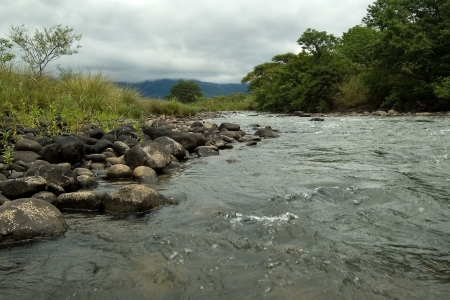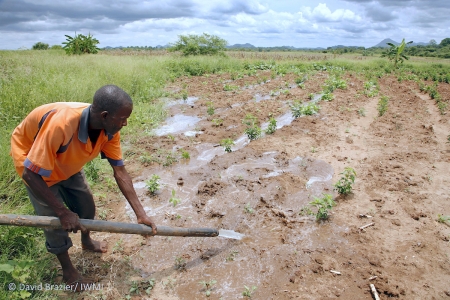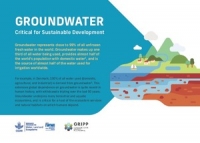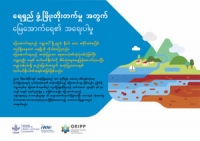Groundwater makes up one-third of all freshwater use for drinking water supply and half of the world's irrigation sources. Access to groundwater has improved millions of small-scale farmers' livelihoods, especially in arid and semi-arid regions, but increasingly also in more humid areas with growing water demand and increasing variability and less predictability in rainfall seasons.
A team of researchers from the Groundwater Solutions Initiative for Policy and Practice (GRIPP) and the CGIAR Research Program on Water, Land and Ecosystems (WLE) - led by the International Water Management Institute (IWMI), have published their highly informative and popular infographic, “Groundwater - Critical for Sustainable Development,” in Burmese (the official language of Myanmar).
The infographic, available in both English and Burmese, illustrates the historic development of groundwater through a very visual timeline and substantial background documentation. It tracks the trends and impacts of groundwater exploitation from ancient times to 2050.
The extensive use of groundwater took off in the 1950s with the development of improved pump and drilling technology. While it has brought many benefits to agricultural development over time, we are now confronting the challenges of overdraft and degradation of the resource with concomitant socio-economic consequences in some areas. Wells and springs are drying up across south and southeast Asia. Cities in coastal low-lying area heavily dependent on groundwater are hit by double-trouble: from land subsidence due to sub-surface compaction when water is pumped out as well as increasing seawater intrusion into surface and groundwater resources as climate change makes the sea level rise. All this potentially complicates wellbeing and livelihoods of large populations.
Pessimistic projections tell us that if we are to continue on our current trajectory, by 2050, 170 million small-scale farmers could be unable to access groundwater for irrigation, Jakarta, home to 10 million people, could be entirely submerged due to land subsidence, and the United States' Ogallala aquifer would be severely depleted, making it impossible to grow crops on 35% of previously arable land.
It isn't all bad news – there is still time to restore balance and secure global water sources for the future. In 2018, Cape Town practically ran out of water during a prolonged drought, but recovered partly due to sensible groundwater development. In more humid areas, where groundwater is replenished on a regular basis, its buffering capacity during dry seasons will be critical for famers’ livelihoods into the future. Sustainable management of groundwater use is possible by raising awareness and introducing collective and informed groundwater resources management in broader integrated, people-centered, and nature-based approaches. Through GRIPP, and especially through these visual means, emerging awareness, and appreciation of groundwater, as well as positive trends and solutions to groundwater exploitation will ensure that together we futureproof the world's groundwater-based water and food security.
The infographic was supported by CGIAR/WLE, IWMI, the International Association of Hydrogeologists (IAH), the International Groundwater Resources Assessment Center (IGRAC), the British Geological Survey (BGS), and Skat Consulting Ltd. The Burmese translation was kindly provided by the Myanmar Water Portal and the Water Agency in Asia.















